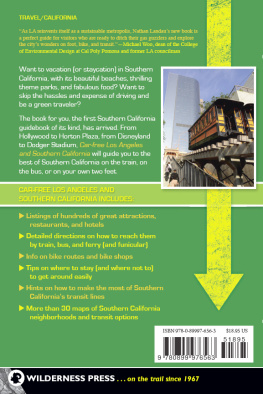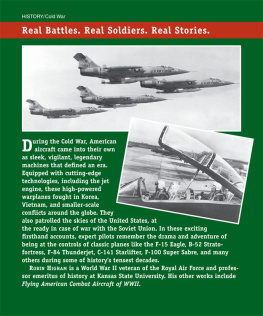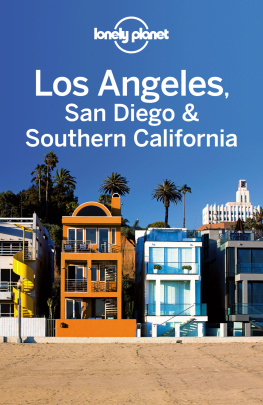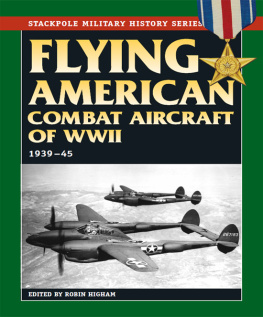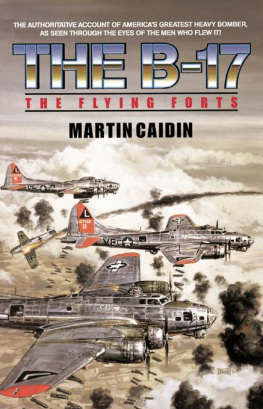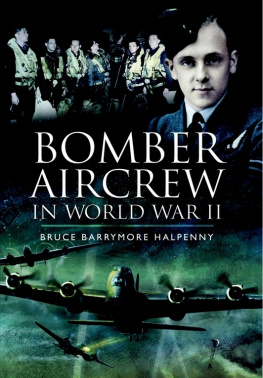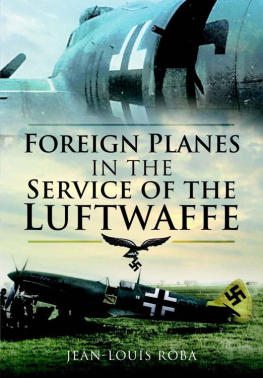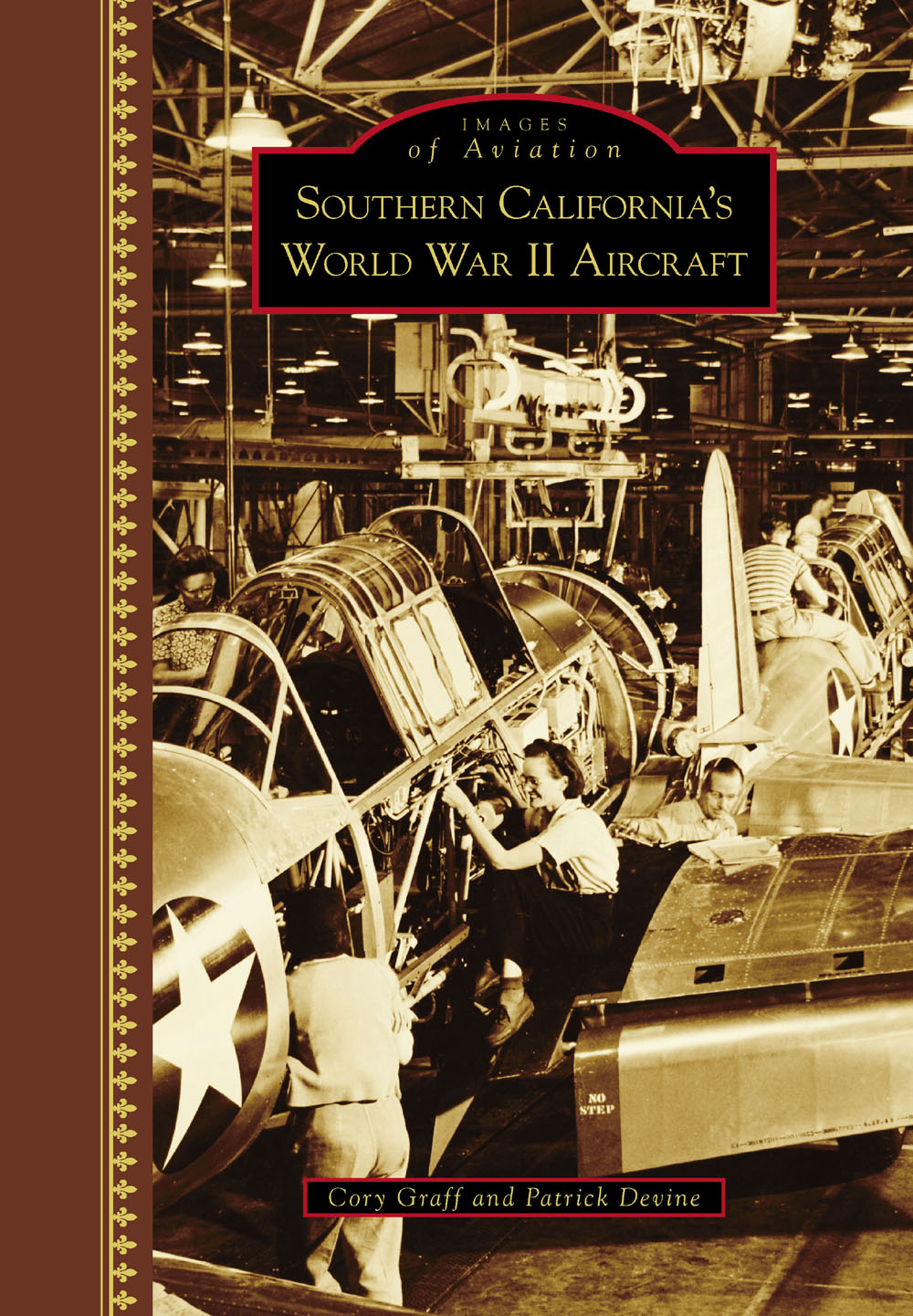
IMAGES
of Aviation
SOUTHERN CALIFORNIAS
WORLD WAR II AIRCRAFT

Lockheeds P-38 Lightning was radical in nearly every waynose gear, twin booms, and unusual central pod. Here, a pilot uses the planes built-in ladder to climb to the cockpit before a bombing mission over Europe. It is worth noting that along with the Burbank-built Lightning, every airplane in this picture was designed and built in CaliforniaMustangs at North American in Inglewood and the C-47 Skytrain at Douglas in Santa Monica. (National Archives, United States Army Air Forces.)
ON THE COVER: New aircraft slowly move along Vultee Aircraft Corporations automated production line in Downey, California, in 1943. This image shows men and women putting the finishing touches on the SNV training plane, a Navy version of the Vultee BT-13. Though officially named the Valiant, nearly everyone called the aircraft the Vultee Vibrator. The company made more than 9,500 of them during World War II. (National Archives, Office of War Information.)
IMAGES
of Aviation
SOUTHERN CALIFORNIAS
WORLD WAR II AIRCRAFT
Cory Graff and Patrick Devine

Copyright 2016 by Cory Graff and Patrick Devine
ISBN 978-1-4671-2446-1
Ebook ISBN 9781439659069
Published by Arcadia Publishing
Charleston, South Carolina
Library of Congress Control Number: 2016941638
For all general information, please contact Arcadia Publishing:
Telephone 843-853-2070
Fax 843-853-0044
E-mail
For customer service and orders:
Toll-Free 1-888-313-2665
Visit us on the Internet at www.arcadiapublishing.com
CONTENTS
ACKNOWLEDGMENTS
The authors would like to thank the following people and institutions for their assistance in creating this volume: P. Janine Kennedy, Calvin Graff, and P.J. Mller; Adrian Hunt and Kathrine Browne from the Flying Heritage Collection; Hill Goodspeed from the National Museum of Naval Aviation; Marvin Bailey of the Santa Maria Museum of Flying; Holly Reed and the staff at the Still Pictures Unit of the National Archives; San Diego Air and Space Museums Alan Renga, Katrina Pescador, and Debbie Seracini; and Matt Todd, Sara Gottlieb, and everyone at Arcadia Publishing.
Photograph credits and sources are noted in parentheses at the end of each caption:
| NA/OoWI | National Archives, Office of War Information |
| NA/USAAF | National Archives, United States Army Air Forces |
| NA/USAF | National Archives, United States Air Force |
| NA/USMC | National Archives, United States Marine Corps |
| NA/USN | National Archives, United States Navy |
| NMoNA | National Museum of Naval Aviation |
| SMMoF | Santa Maria Museum of Flying |
INTRODUCTION
Southern California became the aviation capital of the world before World War II. A magical mix of favorable flying weather and an abundance of inexpensive land made the southwest coast of California an ideal locale to create winged machines and take to the warm, sunny skies year-round.
Each new aviator or designer who came to the Golden State, it seemed, was drawn by those who had come before. Los Angeles County was the site of Americas first air show, held in the winter of 1910. Flyers from colder regions flocked to Dominguez Field (today in Carson, California) to demonstrate their rickety machines. Among the organizers was aviation pioneer Glenn Curtiss from New York. One of the spectators at the event was a wealthy young timber man from Seattle named William E. Boeing. Other future aviation icons in attendance included Glenn Martin, Lawrence Bell, and Donald Douglas.
Glenn Martin established his first airplane factory in an abandoned Methodist church in Santa Ana around 1910. The Loughead brothers (pronounced lockheed) came from the Bay Area to Santa Barbara in 1916, opening their first aviation shop. Waldo Waterman from San Diego came to Venice, California, to create aircraft in 1919. MIT graduate Donald Douglas moved from the East Coast the following year, and T. Claude Ryan migrated west from Kansas to pursue his dreams of flight in 1922.
Each new arrival added more resources to the burgeoning landscape. Besides the wonderful weather and vast acreage, Southern California was a place where these new aviation companies could find educated engineers and designers to make their ideas into reality. Throop Polytechnic Institute (later Caltech) built its first wind tunnel in 1917. In 1919, the University of California Southern Branch (today UCLA) broadened its student pool to include science and letters majors.
These pioneering companies learned from one another too. Jack Northrop worked for Lockheed and Douglas before striking out on his own in 1929. Donald Douglass first plane, built with David R. Davis, was eventually purchased by T. Claude Ryan in 1925. Douglas had learned his trade working as the chief designer for Glenn Martin. In turn, Dutch Kindelberger, who would lead North American Aviation during World War II, also worked for Martin and then became Douglass chief designer in the 1920s.
Douglas and the Loughead brothers each failed at their first endeavors before establishing major companies that would affect the outcome of World War II. Donald Douglas, after dissolving his partnership with David R. Davis, established Douglas Aircraft Company in 1921. Allan and Malcolm Loughead where forced to close shop in 1921 but formed the new Lockheed Aircraft Company in Hollywood in 1926.
While Lockheed and Douglas began in Southern California, the other two major World War IIera manufacturers, North American Aviation and Consolidated Aircraft Corporation, moved into the area in 1935. North American came from Maryland, looking for enough elbow room to build a large order of planes for the US Army. The company settled in Inglewood, near the current location of Los Angeles International Airport.
Consolidated arrived from Buffalo, New York, for the weather and the water. A tract of land along San Diego Harbor, adjacent to Lindbergh Field, allowed for a reliable (and warm) climate to develop and test both landplanes and their signature flying boats.
Smaller companies made up the Southern California scene too. Ryan Aeronautical Company was Consolidateds neighbor at Lindbergh Field in San Diego. The airstrip was named after Charles Lindbergh, who had become famous for crossing the Atlantic Ocean flying an aircraft designed and built by T. Claude Ryans first concern, Ryan Flying Company, also in San Diego.
In the Los Angeles area, Jack Northrop formed Northrop Aircraft Inc. in Hawthorne, California, and worked with Donald Douglas to establish the Northrop Corporation, a division of Douglas Aircraft located in El Segundo. Caltech grad Gerard Jerry Freebairn Vultee worked for Lockheed, then Douglas, and directly with Jack Northrop before setting out on his own. After many iterations and partnerships, the Vultee Aircraft Division of the Aviation Manufacturing Corporation was formed in 1937 in Downey, California.
Millionaire and movie mogul Howard Hughes Jr. established Hughes Aircraft Company in Los Angeles in 1932, a division of Hughes Tool Company. Hughess interests were highly focused and usually solo endeavors. After the development of his speedy H-1 racer in 1935, the companys workforce shrank to just four employees. At the height of World War II, however, Hughes Aircraft had a labor force of more than 1,800 men and women building components for military aircraft and developing a pair of flying machines of its own.
Next page





